US-Sport
NFL: Third and Long: Free Agency Analysis – Manziel about the Patriots?
Now that the expensive phase of the Free Agency has finally come to an end – now also with Ndamukong Suh – an annual question comes to the fore: How sensible is it actually to spend a lot of money in mid-March? SPOX editor Adrian Franke sheds light on this question in the SPOX NFL column. Besides, could Johnny Manziel land with the Patriots? What are the quarterback options behind the top candidates in the draft, and how aggressively should teams search for quarterbacks?
You also want to ask questions to the SPOX-NFL column? This goes directly to the author!
Year after year it is an exciting point of discussion: Are expensive free agency shopping tours worthwhile – or does it make more sense to keep your feet still here? What is the “right” approach when approaching the Free Agency and what is more promising?
The short answer would be: As so often there is no generally valid formula. Otherwise, every team would simply follow them. Salary cap has risen by an impressive 40 percent since 2013, from $123 million in 2013 to $177.2 million this year. A drastic, drastic and unusually constant increase that the teams also had to adjust to.
This has had very different strategic effects, but above all, we now have a data set that can be worked with. In order to better understand some of the tendencies in how teams deal with the Free Agency and the consequences of aggressive and conservative behaviour, I have looked at the last five years – with recurring teams at both ends of the spectrum.
Anyone who feels that Jacksonville has been spending a disproportionate amount of money in the Free Agency for years is, well, absolutely right. It has meanwhile taken on almost grotesque traits.
Jacksonville was in the top four in 2014 (112.9 m/rank 4), 2015 (176.4 m/rank 2), 2016 (230 m/rank 1) and 2017 (178.8 m/rank 1) spending in the Free Agency (the total volume of contracts issued by the Free Agency is listed). And this, as is well known, with dubious success: Jacksonville did not exceed five victories in one season between 2014 and 2016 (3,5,3).
These included desolate free agency classes such as 2015: With Dan Skuta (5 years, 20.5 million), Julius Thomas (5 years, 46 million), House (4 years, 24.5 million) and Jared Odrick (5 years, 42.5 million), a lot of money was invested in players who quickly turned out to be wrong purchases.
The bottom line is that there are three main categories of teams that are eager to spend money. On the one hand, there are the teams that have little success in the draft over a certain period of time and accordingly have money (because contracts have not been extended) and on the other hand also many holes. The Jaguars undoubtedly fall into this category, the Dolphins 2013 also wanted to spasmodically rise – and offered far too much money for players like Mike Wallace, Dannell Ellerbe and Philip Wheeler. To some extent they wanted to buy the extended team core and bet on the completely wrong horses.
Category number two are the teams that approach a certain area of their team drastically and aggressively, but too often lose sight of the long-term perspective. With the commitments of Darrelle Revis, Antonio Cromartie, Marcus Gilchrist and Buster Skrine, the jets managed to overtake the complete secondary in 2015. In return, there was a good season in which they only missed the playoffs by a hair’s breadth – followed by the complete upheaval that was necessary and thus time in the cellar again.
New York was far from being a contender and the crash was all the more drastic. However, there are also the positive examples: in category number three I count here the teams that make it into the Contender circle through an aggressive Free Agency.
The Broncos are without doubt the best example of this. Denver came second in 2014, spending $127.6 million, with only seven free agency commitments. By comparison, Tampa, the “leader”, agreed with 24 free agents that year. But for that, Aqib brought Talib, T.J. Ward, DeMarcus Ware and Emmanuel Sanders were also the pillars of the team that was finally to win the Super Bowl in 2015.
The Giants tried a similar model in 2016 and laid the foundation for the playoff entry in the Free Agency: Damon Harrison (5 years, 46.25 million), Janoris Jenkins (5 years, 62.5 million) and Olivier Vernon (5 years, 85 million) gave an identity to a New York defense without a bite. Jacksonville has now been at the top twice in a row, but it can be clearly said that without last year’s commitments from Calais Campbell, A.J. Bouye and Barry Church did not make the dominant defense of the past season – and thus also the playoff participation.
The counter-example: In 2013, Indianapolis and Andrew Luck thought they were ready for the big hit in the second year and finished second behind Miami with expenditures of 142.8 million dollars. But there were massive mispurchases: Right Tackle Gosder Cherilus (5 years, 35 million), Defensive Tackle Ricky Jean Francois (4 years, 22 million) and Safety LaRon Landry (4 years, 24 million) were only two years in Indy.
The correct player evaluation is of course central here, one way or another, however, examples like Denver are still the absolute exception. Too often, bad teams try to stuff some of their construction sites with a lot of money, while elsewhere the problem zones remain. And too often this concerns the quarterback position, so that the free agency shopping tour becomes a drop in the ocean.
The blatant counter-example are the teams that seem to be in their deepest hibernation in mid-March. Green Bay has long belonged to this group, so has Pittsburgh. Here the picture becomes more difficult to interpret, but a few conclusions can be drawn.
This is especially true when you look a little wider and take a closer look at the stingy teams of the past five years.
2013: Dallas, Pittsburgh, Carolina, Green Bay, Jacksonville (all under 18 million)
2014: Cincinnati, Kansas City, Seattle, Chargers, Houston (all under 33 million)
2015: Green Bay, Pittsburgh, Detroit, Minnesota, Carolina (all under 23 million)
2016: Carolina, Buffalo, San Francisco, Green Bay, Cincinnati (all under 19 million)
2017: Cincinnati, Kansas City, Houston, Oakland, Seattle (all under 26 million)
What immediately stands out: Almost every single one of these teams had already found its franchise quarterback at the time of the respective free agency – at least in its own estimation.
This makes certain things easier, with a franchise quarterback holes can be filled much easier and possible deficits can be overridden much easier. It is also noticeable that some of the more complete squads of the past years are listed here.
At the same time, however, it can also be said that teams draw the wrong conclusions when they have their franchise quarterback. In other words, they become too comfortable and too conservative.
With the Packers I have already criticized this several times, Green Bay has not managed for years to complete its own squad sensibly with individual high-carat players and thus to open the title window further, as long as Aaron Rodgers still has.
The Packers could have taken an example from the Super Bowl winners of recent years. Because here a clear, repeating pattern becomes clear. A pattern that Green Bay may also adopt this year with Jimmy Graham and Mo Wilkerson.
Listed are the respective Free Agency expenses directly before the Super Bowl season.
What stands out? First of all, how close the rankings in the league as a whole are. Four times between 21 and 26, only the 2014 Patriots were the escapees to the top. First things first:
2013: Seattle were thrifty but scored two goals: Michael Bennett (1 year, 4.8 million) and Cliff Avril (2 years, 13 million) were to dominate the Seahawks’ defensive line and pass rush for years to come.
2014: The anomaly on this list, but it’s easy to explain. New England bought a new starting cornerback duo, Brandon Browner and Darrelle Revis, who played an individual and schematic part in the trimuph.
2015: Denver didn’t spend much in the title year, but the year before he had a lot of money with Aqib Talib, T.J. Ward, DeMarcus Ware and Emmanuel Sanders and spent the second most money (127.6 M dollar)
2016: Targeted reinforcements characterize the Pats 2016: Chris Hogan, Chris Long, LeGarrette Blount.
2017: And Philly also strengthened his squad in a very sensible way. Among others with Alshon Jeffery, Torrey Smith, LeGarrette Blount, Patrick Robinson and of course Nick Foles.
When looking at the Free Agency, it is difficult to lump teams together – in the end, the requirements are too different. But there are certain trends. For example, a very aggressive approach only makes sense if the team already has several puzzle pieces ready for the big throw – like Denver in 2014 and 2015. The jets remain the deterrent example of this.
However, teams from the past five years that were new territory for all teams with regard to the Salary Cap should also take other lessons with them. A Contender may not be created in the Free Agency, but it does get the final polish. All Super Bowl Champions of the past years show this.
To waste the prime years of an elite quarterback, because one believes that it is precisely because of this quarterback that one can proceed sparingly, on the other hand, is a gross misjudgement. This should not be a blind call to wild spending, but rather an invitation to more courage at certain points. But if you haven’t found your quarterback yet, you probably won’t be able to build up a Contender in the Free Agency. As much as Jacksonville tries.
Finally, there is a matching third category of the generous teams, and this year – with the cap at its peak and cap rollover of the past years as a major component of the Free Agency – it is really clear: these are the teams that want to help the quarterback in which they have invested money or pick(s) and in which they see their franchise quarterback to the next step.
Chicago is the clearest example: The Bears lead the current Free Agency in terms of total contract volume ($216.9 million), but with Allen Robinson, Taylor Gabriel and Trey Burton they also invested heavily in Mitch Trubisky’s arsenal. The Titans (128.5 million/place 4) go in a similar direction with Josh Kline and Dion Lewis with Marcus Mariota, just like San Francisco (121 million/place 6) with Weston Richburg and Jerick McKinnon with Jimmy Garoppolo.
And the Jaguars? 171 million dollars will put Jacksonville on the podium behind Chicago and the Jets again this year.
Page 1: The big Free Agency analysis: Does spending a lot really help?
Page 2: Manziel to the Patriots? Quarterback trades? Draft? Your questions


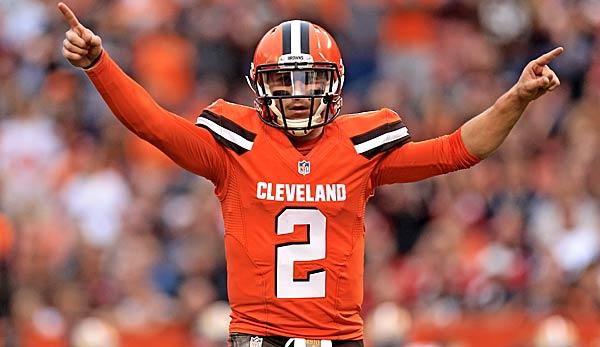


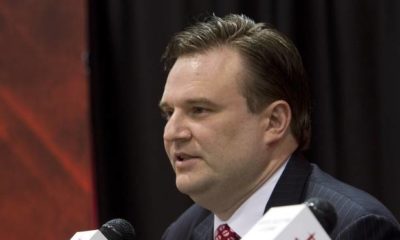
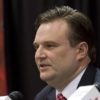
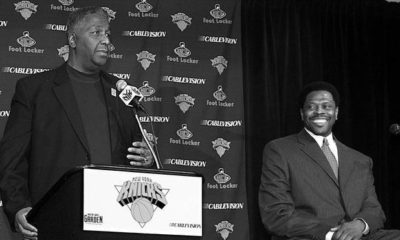
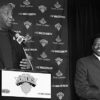


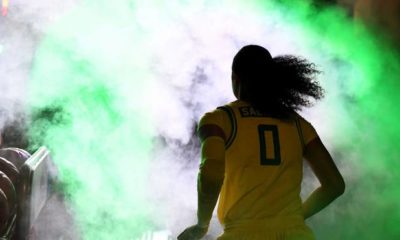






You must be logged in to post a comment Login